QGradient Class Reference |
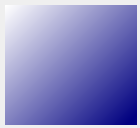 | 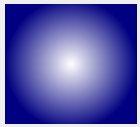 | 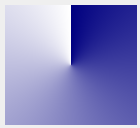 |
| QLinearGradient | QRadialGradient | QConicalGradient |
|---|
The colors in a gradient is defined using stop points of the QGradientStop type, i.e. a position and a color. Use the setColorAt() function to define a single stop point. Alternatively, use the setStops() function to define several stop points in one go. Note that the latter function replaces the current set of stop points.
It is the gradient's complete set of stop points (accessible through the stops() function) that describes how the gradient area should be filled. If no stop points have been specified, a gradient of black at 0 to white at 1 is used.
A diagonal linear gradient from black at (100, 100) to white at (200, 200) could be specified like this:
QLinearGradient linearGrad(QPointF(100, 100), QPointF(200, 200));
linearGrad.setColorAt(0, Qt::black);
linearGrad.setColorAt(1, Qt::white);
A gradient can have an arbitrary number of stop points. The following would create a radial gradient starting with red in the center, blue and then green on the edges:
QRadialGradient radialGrad(QPointF(100, 100), 100);
radialGrad.setColorAt(0, Qt::red);
radialGrad.setColorAt(0.5, Qt::blue);
radialGrad.setColorAt(1, Qt::green);
It is possible to repeat or reflect the gradient outside its area by specifiying the spread method using the setSpread() function. The default is to pad the outside area with the color at the closest stop point. The currently set spread method can be retrieved using the spread() function. The QGradient::Spread enum defines three different methods:
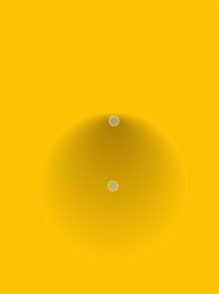 |  | 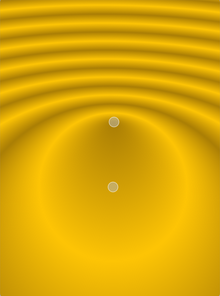 |
| PadSpread | RepeatSpread | ReflectSpread |
Note that the setSpread() function only has effect for linear and radial gradients. The reason is that the conical gradient is closed by definition, i.e. the conical gradient fills the entire circle from 0 - 360 degrees, while the boundary of a radial or a linear gradient can be specified through its radius or final stop points, respectively.
The gradient coordinates can be specified in logical coordinates, relative to device coordinates, or relative to object bounding box coordinates. The coordinate mode can be set using the setCoordinateMode() function. The default is LogicalMode, where the gradient coordinates are specified in the same way as the object coordinates. To retrieve the currently set coordinate mode use coordinateMode().
See also The Gradients Demo and QBrush.
Member Type Documentation
enum QGradient::CoordinateMode
This enum specifies how gradient coordinates map to the paint device on which the gradient is used.
| Constant | Value | Description |
|---|---|---|
| QGradient::LogicalMode | 0 | This is the default mode. The gradient coordinates are specified logical space just like the object coordinates. |
| QGradient::StretchToDeviceMode | 1 | In this mode the gradient coordinates are relative to the bounding rectangle of the paint device, with (0,0) in the top left corner, and (1,1) in the bottom right corner of the paint device. |
| QGradient::ObjectBoundingMode | 2 | In this mode the gradient coordinates are relative to the bounding rectangle of the object being drawn, with (0,0) in the top left corner, and (1,1) in the bottom right corner of the object's bounding rectangle. |
This enum was introduced in Qt 4.4.
enum QGradient::Spread
Specifies how the area outside the gradient area should be filled.
| Constant | Value | Description |
|---|---|---|
| QGradient::PadSpread | 0 | The area is filled with the closest stop color. This is the default. |
| QGradient::RepeatSpread | 2 | The gradient is repeated outside the gradient area. |
| QGradient::ReflectSpread | 1 | The gradient is reflected outside the gradient area. |
See also spread() and setSpread().
enum QGradient::Type
Specifies the type of gradient.
| Constant | Value | Description |
|---|---|---|
| QGradient::LinearGradient | 0 | Interpolates colors between start and end points (QLinearGradient). |
| QGradient::RadialGradient | 1 | Interpolate colors between a focal point and end points on a circle surrounding it (QRadialGradient). |
| QGradient::ConicalGradient | 2 | Interpolate colors around a center point (QConicalGradient). |
| QGradient::NoGradient | 3 | No gradient is used. |
See also type().
Member Function Documentation
CoordinateMode QGradient::coordinateMode () const
Returns the coordinate mode of this gradient. The default mode is LogicalMode.
This function was introduced in Qt 4.4.
See also setCoordinateMode().
void QGradient::setColorAt ( qreal position, const QColor & color )
Creates a stop point at the given position with the given color. The given position must be in the range 0 to 1.
See also setStops() and stops().
void QGradient::setCoordinateMode ( CoordinateMode mode )
Sets the coordinate mode of this gradient to mode. The default mode is LogicalMode.
This function was introduced in Qt 4.4.
See also coordinateMode().
void QGradient::setSpread ( Spread method )
Specifies the spread method that should be used for this gradient.
Note that this function only has effect for linear and radial gradients.
See also spread().
void QGradient::setStops ( const QGradientStops & stopPoints )
Replaces the current set of stop points with the given stopPoints. The positions of the points must be in the range 0 to 1, and must be sorted with the lowest point first.
See also setColorAt() and stops().
Spread QGradient::spread () const
Returns the spread method use by this gradient. The default is PadSpread.
See also setSpread().
QGradientStops QGradient::stops () const
Returns the stop points for this gradient.
If no stop points have been specified, a gradient of black at 0 to white at 1 is used.
See also setStops() and setColorAt().
Type QGradient::type () const
Returns the type of gradient.
bool QGradient::operator!= ( const QGradient & gradient ) const
Returns true if the gradient is the same as the other gradient specified; otherwise returns false.
This function was introduced in Qt 4.2.
See also operator==().
bool QGradient::operator== ( const QGradient & gradient ) const
Returns true if the gradient is the same as the other gradient specified; otherwise returns false.
See also operator!=().
Related Non-Members
typedef QGradientStop
Typedef for QPair<qreal, QColor>.
typedef QGradientStops
Typedef for QVector<QGradientStop>.
Best Of
Actualités les plus lues
- « Quelque chose ne va vraiment pas avec les développeurs "modernes" », un développeur à "l'ancienne" critique la multiplication des bibliothèques 12
- Quelles nouveautés de C++11 Visual C++ doit-il rapidement intégrer ? Donnez-nous votre avis 10
- Partage de données explicite et implicite avec Qt, un article de Christophe Dumez traduit par Thibaut Cuvelier 0
- Créer des applications avec un style Metro avec Qt, exemples en QML et C++, un article du blog Digia traduit par Thibaut Cuvelier 0
- Microsoft ouvre aux autres compilateurs C++ AMP, la spécification pour la conception d'applications parallèles C++ utilisant le GPU 22
- Les développeurs ignorent-ils trop les failles découvertes dans leur code ? Prenez-vous en compte les remarques des autres ? 17
- RIM : « 13 % des développeurs ont gagné plus de 100 000 $ sur l'AppWord », Qt et open-source au menu du BlackBerry DevCon Europe 0
- « Quelque chose ne va vraiment pas avec les développeurs "modernes" », un développeur à "l'ancienne" critique la multiplication des bibliothèques 12
- BlackBerry 10 : premières images du prochain OS de RIM qui devrait intégrer des widgets et des tuiles inspirées de Windows Phone 0
- Adieu qmake, bienvenue qbs : Qt Building Suite, un outil déclaratif et extensible pour la compilation de projets Qt 17
- Quelles nouveautés de C++11 Visual C++ doit-il rapidement intégrer ? Donnez-nous votre avis 10

- Linus Torvalds : le "C++ est un langage horrible", en justifiant le choix du C pour le système de gestion de version Git 100
- Comment prendre en compte l'utilisateur dans vos applications ? Pour un développeur, « 90 % des utilisateurs sont des idiots » 229
- Quel est LE livre que tout développeur doit lire absolument ? Celui qui vous a le plus marqué et inspiré 96
- Apple cède et s'engage à payer des droits à Nokia, le conflit des brevets entre les deux firmes s'achève 158
- Nokia porte à nouveau plainte contre Apple pour violation de sept nouveaux brevets 158
- Quel est le code dont vous êtes le plus fier ? Pourquoi l'avez-vous écrit ? Et pourquoi vous a-t-il donné autant de satisfaction ? 83
- Le Draft final de la norme C++ 0X validé 181

Le Qt Developer Network au hasard

Applications mobiles modernes avec Qt et QML
Communauté
Ressources
- 91 cours et tutoriels Qt
- F.A.Q. Qt : 200 questions et réponses
- 48 Qt Quarterly, 35 Qt Labs et 22 Qt DevNet en français
- 43 outils Qt
- 99 sources Qt
- 26 binaires Qt
- 6 livres Qt et 9 critiques
- La documentation de Qt 4.7 en français : 157 classes, 70 concepts et 24 modules
- 3 certifications Qt
Liens utiles
Contact
- Vous souhaitez rejoindre la rédaction ou proposer un tutoriel, une traduction, une question... ? Postez dans le forum Contribuez ou contactez-nous par MP ou par email (voir en bas de page).
Qt dans le magazine
| Cette page est une traduction d'une page de la documentation de Qt, écrite par Nokia Corporation and/or its subsidiary(-ies). Les éventuels problèmes résultant d'une mauvaise traduction ne sont pas imputables à Nokia. | Qt 4.4 | |
| Copyright © 2012 Developpez LLC. Tous droits réservés Developpez LLC. Aucune reproduction, même partielle, ne peut être faite de ce site et de l'ensemble de son contenu : textes, documents et images sans l'autorisation expresse de Developpez LLC. Sinon, vous encourez selon la loi jusqu'à 3 ans de prison et jusqu'à 300 000 E de dommages et intérêts. Cette page est déposée à la SACD. | ||
| Vous avez déniché une erreur ? Un bug ? Une redirection cassée ? Ou tout autre problème, quel qu'il soit ? Ou bien vous désirez participer à ce projet de traduction ? N'hésitez pas à nous contacter ou par MP ! | ||
Copyright © 2000-2012 - www.developpez.com



















